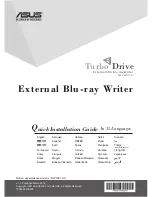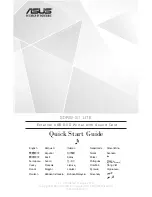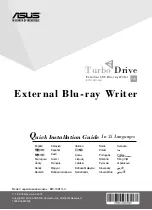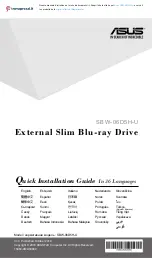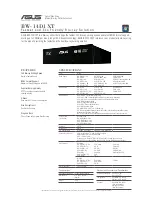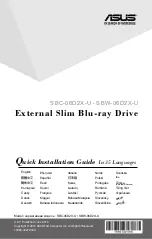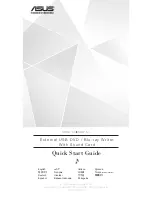
44
VQT2H73
Glossary
AVCHD
AVCHD is a new format (standard) for high definition video
cameras that can be used to record and play high-resolution
HD images.
BD-J
Some BD-Video discs contain Java applications, and these
applications are called BD-J. You can enjoy various interactive
features in addition to playing normal video.
Bitstream
This is the digital form of multi-channel audio data (e.g.,
5.1 channel) before it is decoded into its various channels.
BONUSVIEW (Final Standard Profile)
This is a BD-Video (BD-ROM Profile 1 version 1.1) that
supports the new functions such as Picture-in-picture and
Secondary Audio, etc.
DivX
DivX is a popular media technology created by DivX, Inc. DivX
media files contain highly compressed video with high visual
quality that maintains a relatively small file size.
Dolby Digital
This is a method of coding digital signals developed by Dolby
Laboratories. Apart from stereo (2-channel) audio, these
signals can also be multi-channel audio.
Dolby Digital Plus
Multi-channel audio and higher audio quality is made possible
using Dolby Digital Plus. BD-Video supports up to 7.1 channel
output.
Dolby TrueHD
Dolby TrueHD is a very high quality audio format that
reproduces the studio master audio. BD-Video supports up to
7.1 channel output.
Down-mixing
This is the process of remixing the multi-channel audio found
on some discs into fewer channels.
DTS (Digital Theater Systems)
This surround system is used in many movie theatres. There is
good separation between the channels, so realistic sound
effects are possible.
DTS-HD
DTS-HD is a high-quality, sophisticated audio format used in
movie theatres. Previous DTS Digital Surround-compatible
equipment can play DTS-HD as DTS Digital Surround audio.
BD-Video supports up to 7.1 channel output.
DTS-HD High Resolution Audio
This is a signal format achieved by improving the previous
DTS, DTS-ES and DTS 96/24 formats. It is compatible with
sampling frequency 96 kHz/48 kHz. BD-Video supports up to
7.1 channel output.
DTS-HD Master Audio
This is a lossless audio format and compatible with 96 kHz/
7.1ch or less. In addition, faithful reproduction of the master
audio is enabled using lossless audio encoding technology.
BD-Video supports up to 7.1 channel output.
Dynamic range
Dynamic range is the difference between the lowest level of
sound that can be heard above the noise of the equipment and
the highest level of sound before distortion occurs.
Dynamic range compression means reducing the gap between
the loudest and softest sounds. This means you can listen at
low volumes but still hear dialog clearly.
Film and video
DVD-Video are recorded using either film or video. This unit
can determine which type has been used, then uses the most
suitable method of progressive output.
Folder
This is a place on the disc, SD card where groups of data are
stored together. Additional folders can be created within
folders, and you can make detailed classifications depending
on the folder structure. (
>
36)
Frames and fields
Frames refer to the single images that constitute the video you
see on your television. Each frame consists of two fields.
≥
A frame still shows two fields, so there may be some blurring,
but picture quality is generally better.
≥
A field still shows less picture information so it may be
rougher, but there is no blurring.
HDMI (High-Definition Multimedia Interface)
HDMI is a digital interface for consumer electronic products.
Unlike conventional connections, it transmits uncompressed
digital video and audio signals on a single cable.
Film:
Recorded at 25 frames per second (PAL discs) or 24
frames per second (NTSC discs). (NTSC discs
recorded at 30 frames per second as well.)
Generally appropriate for motion picture films.
Video: Recorded at 25 frames/50 fields per second (PAL
discs) or 30 frames/60 fields per second (NTSC
discs). Generally appropriate for TV drama
programmes or animation.
Frame
Field
Field
r
DMPB100EB-VQT2H73_eng.book 44 ページ 2010年1月15日 金曜日 午後9時19分



























